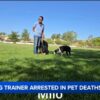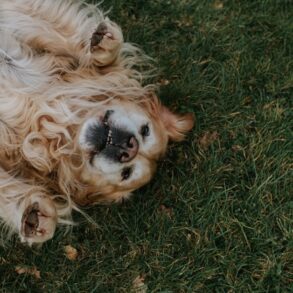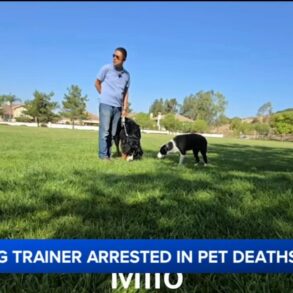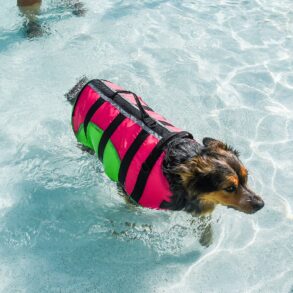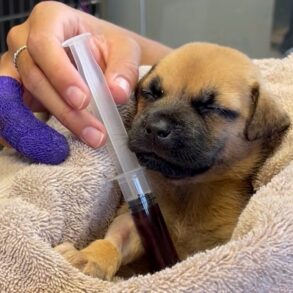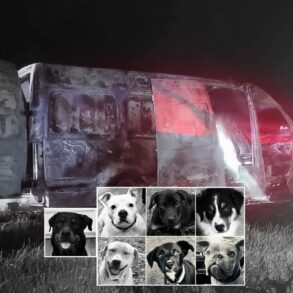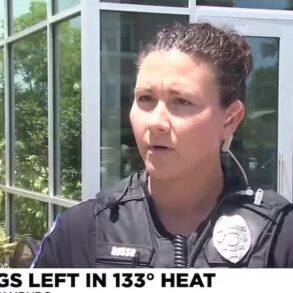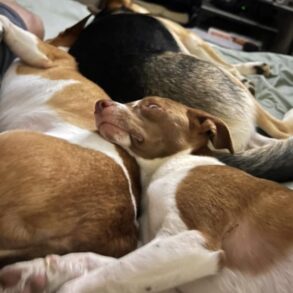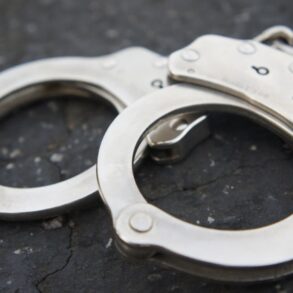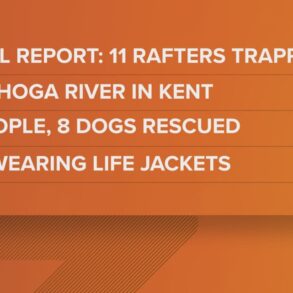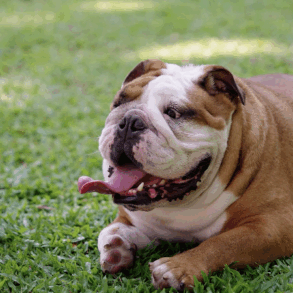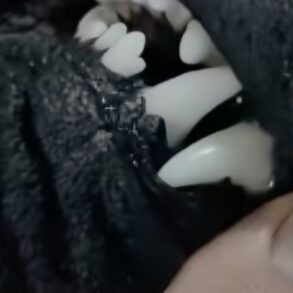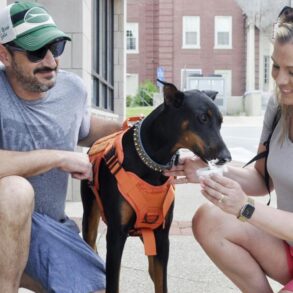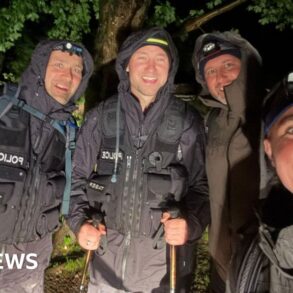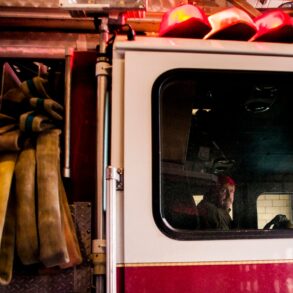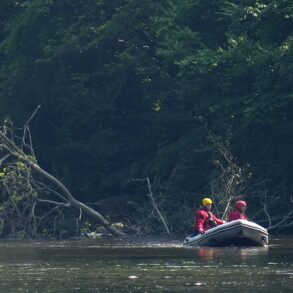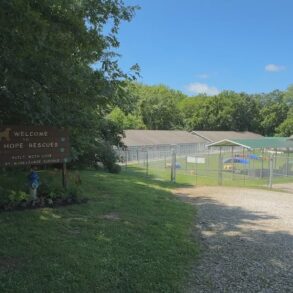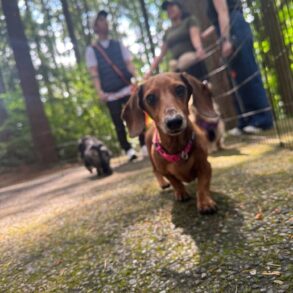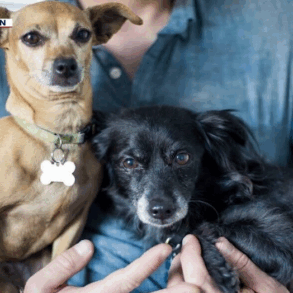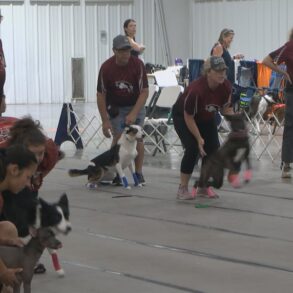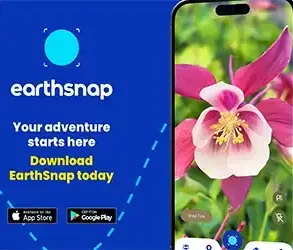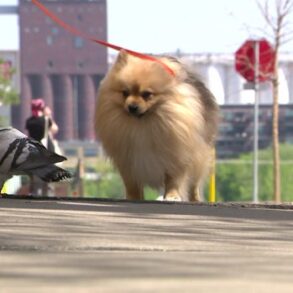Texas’ Archery Only and Managed Lands Deer seasons got underway Sept. 28. The general season starts Nov. 2, one week after what is sure to be a busy Youth Only hunting weekend that runs Oct. 25-27. It’s showtime for an army Texas K-9s that live for deer season and the chance to put their noses to work to help hunters recover animals they otherwise may not find.
Sniffing out a whitetail that runs off after a bow or rifle shot that doesn’t find the right mark can be a tedious task, but somebody has got to do it. Folks who have seen “Scout” and “Dago” tend to business will argue they are pretty good hands.
Scout is a spirited little Jack Russell Terrier female handled by Jared Polasek of Hudson; Dago, a salty hound/cur cross female trained by Jeff Glende of Orange.
Both dogs are proven crackerjacks when it comes to tracking down wounded deer, often in the thickest of brush and the nastiest creek bottoms around. Each fall, their owners and other handlers who share a passion for trailing dogs field dozens of phone calls from anxious hunters. Many are living out what is one of big game hunting’s very worst nightmares.
Any responsible hunter who has made a shot on a deer they were unsuccessful in finding can certainly relate. The fear and anxiety that sets in when a blood trail suddenly plays out can at times be so overwhelming that it can cause a veteran hunter to make rookie tracking mistakes. Those errors could ultimately turn a deer into coyote bait rather than a handsome trophy for the wall and venison for the freezer.
Glende and Polasek have heard it all when it comes to descriptions about the big one that was hit good, but seemingly vanished without a trace. Their advice is always the same: When in doubt, make the call for good dog with a proven track record. Advice is free, but the services are not.
I asked the two dog handlers to offer some tips hunters can follow to improve their chances of recovery in the event a dog is needed. Here’s what they had to say: 1.) Don’t Grid Search: Polasek called this one the “golden rule.” If you think there is any chance that you might bring in a dog, do not call in several of your hunting buddies to fan out and look for the deer ahead of time.
Polasek says grid searching before the dog arrives could hamper the recovery process, because it may result in false scent trails that could temporarily throw the dog off the primary trail multiple times.
“If you have 4-5 guys that spread out from the blood trail, each one of them is going to drag the scent on their feet whichever way they go,” he said. “They could step in blood, guts or the waxy substance deer release from the interdigital gland between their hooves and never even know it.”
Polasek says grid searching also increases the chances pushing or bumping a live deer.
2.) No Blood, Back Out: Polesek says it is never a good idea to continue a search for a wounded deer if the blood trail plays out.
“So long as you have blood, track as good as you can,” he said. “But once the blood starts fizzling out you need to back out of the woods immediately. There is a good chance you are just going to keep pushing the deer if you don’t.”
3.) Mark the Blood: Polesek says it is always smart to flag or mark any blood using survey ribbon or toilet paper. The physical markers provide reliable points of reference for when the dog arrives.
“Depending on the shot, it might be 6-8 hours after I get the call before I actually get there with the dog,” he said. “Finding blood after that long can be difficult unless it’s marked with something. People sometimes drop pins on their phones to mark blood, but those pins don’t take you to the exact spot. Mark every spot with something physical. That way I can be sure my dog gets locked in on the trail ASAP.”
4.) Look for Bone: If you find bone on the ground at the hit sight or soon thereafter, it’s a good sign of a leg shot deer. Polasek says you should call a good dog tracker immediately.
“That deer is not mortally wounded and isn’t going to die anytime soon,” he said. “We need to get on it as quickly as possible, while his adrenaline is still pumping and he is disoriented. Once a leg shot deer gets back in his element, he can outsmart a dog really quick, especially if you don’t have one that can run them down.”
5.) Digital Documentation: The more solid evidence of the shot you can provide a tracker ahead of time the better. Polasek recommends taking pictures of blood at the hit site. If you used archery gear or a crossbow, take pictures of the blood on the arrow shaft. The color of the blood can be a good indicator of where the deer was hit. A video of the shot is even better.
“Text or e-mail anything you have to the dog handler before they get there,” he said. “All of this can give me a good idea about how the deer was hit before I even get there. It can also tell me if it’s a deer we need to go after immediately, or if we need to wait for a few hours.”
6.) The Details Mean A Lot: How did the deer react after the shot? Did it rear on its hind legs, drop down in the front, hunch up or just walk away or run off? Did you attempt to track the deer before the dog arrived?
Glende says the smallest details can mean a lot to a knowledgeable dog handler. Translation: Be observant out there. And be truthful about any previous attempts to track the deer.
“People get so caught up in the moment that they don’t pay attention to the little details,” he said. “The smallest detail may not mean much to you, but it can be a tell-tale sign for us. It helps me determine in my mind where I think the deer might be hit and how much time I want to give that animal before we go after it.”
7.) Patience, Patience, Patience: It’s super important, especially if you suspect a deer might be gut shot and there is no blood trail to follow. Glende recommends waiting a minimum of 8-12 hours before pursuing a deer that is gut shot with a bow; 5-7 hours on deer gut shot with a rifle.
“If you know a deer is gut shot, or find something on the ground that indicates a gut shot, the smartest thing you can do is back out quietly, call someone with a dog and be prepared to wait,” Glende said. “Oftentimes we’ll find that deer inside 200 yards of the shot.”
Some hunters struggle with being patient because they are overly excited or have other obligations pressing, but Glende says there isn’t a better alternative if you hope to make a successful recovery on a gut shot animal.
“If you try to go in on that deer too soon and he so much as hears a limb break or sees a light, his next stopping point may be 800 yards,” he said. “Bump him a second time and there is no telling.”
8.) Know Your Neighbors: A wounded deer has no respect for property lines. Nor does a salty tracking dog on a scent trail. It is never wise to infringe on another landowner’s property without getting permission first.
Glende says hunters should always have contact phone numbers for landowners or club members on properties adjacent to the property where you hunt, just in case the deer crosses the boundary. If you don’t have a phone number, the state game warden assigned to the county may be able to steer you in the right direction.
9.) It’s Not a Wash: Just because it rains on a blood trail is no reason to rule out calling for a dog. Glende says many hunters believe a rain that washes away blood can hurt the chances of a dog making a successful recovery, but it doesn’t.
“Rain may wash the color away, but it will not wash the scent away,” Glende said. “A lot of times it can actually help the dog track better.”
10.) Not All Dogs are Equal: Be wary of the hunting buddy who knows a guy down the road who claims to have a good tracking dog. Not all of them are created equal.
“Do your due diligence in advance and find out who the actual trackers in your area are and check out their reputations,” he said. “If you call for a dog, make sure you call for a good one the first time.”
Matt Williams is a freelance writer based in Nacogdoches. He can be reached by email, mattwillwrite4u@yahoo. com.
This post was originally published on this site be sure to check out more of their content.



